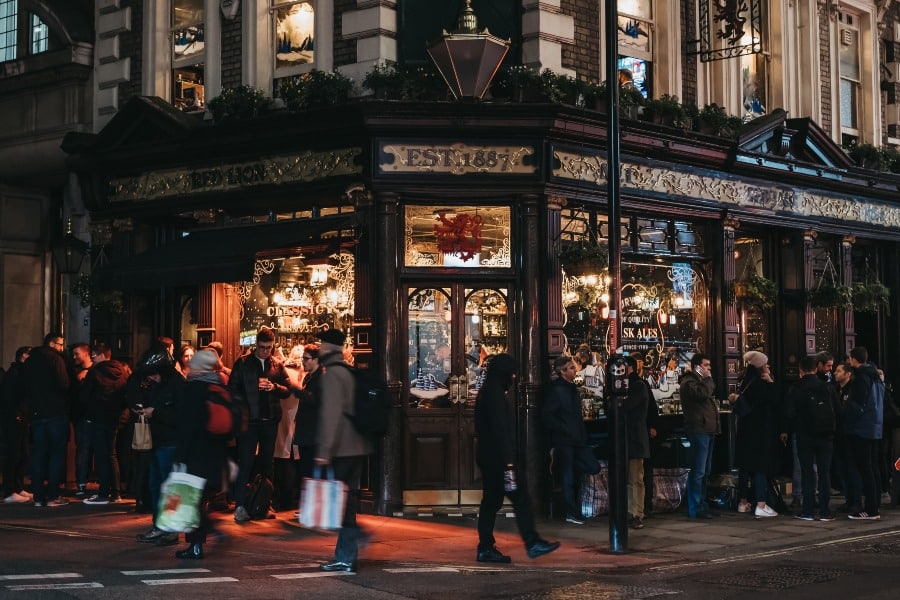Improving physical security and incorporating counter terrorism measures


James Thorpe
Share this content
Alfie Hosker, Technical Manager, Secured by Design assesses the importance of improving the physical security of buildings and incorporating counter terrorism measures into the layout and landscaping of developments.
The threat from terrorism is an ongoing concern.
Whilst the chances of getting caught up in a terrorist incident remains low, it is nevertheless essential that the threat is considered by those stakeholders involved at all stages of a development, starting at the initial concept.
Secured by Design (SBD), part of the Police CPI portfolio of initiatives, works to improve the security of buildings and their immediate surroundings, reducing the opportunities for crime and providing safe places to live, work, shop and visit.
Working closely with government, local authorities, architects, developers and builders, SBD looks to incorporate police crime prevention and anti-terrorism measures from the initial concept and design stage through to the construction and completion of buildings and developments.
This work not only covers the construction of new buildings and developments, but also refurbishment and landscaping.
The UK Police Service has a number of specialised staff called Designing Out Crime Officers (DOCOs), whose roles include working with planners, architects, engineers, security/facilities managers and other stakeholders across both new build and refurbishment projects to incorporate the relevant site specific designing out crime measures into the project.
Where applicable, this work is also undertaken alongside a Counter Terrorism Security Adviser (CTSA), who will advise on all aspects of counter terrorism protective security.
In addition, CTSAs are responsible for the provision of protective security advice to crowded places – areas where there may be large crowds who could be vulnerable to a terrorist attack, such as shopping centres, sporting stadiums, pubs and bars, transport hubs and more.
DOCOs
DOCOs are recommended as a source of assistance by the National Protective Security Authority (NPSA) – previously the Centre for the Protection of the National Infrastructure (CPNI) – due to their comprehensive, specialist training.
Both the National Planning Policy Framework (NPPF) and National Planning Practice Guidance (NPPG) promote creating safe and sustainable communities, encouraging pre-application discussion between planners, CTSAs and DOCOs and involving architects, developers and key stakeholders.
A Memorandum of Understanding (MOU) is in place between CTSAs and DOCOs to support this measure and ensure they work together effectively to provide formal responses to relevant planning applications.
SBD is also referenced in the National Counter Terrorism Security Office’s (NaCTSO) Crowded Places guidance suite of documents directing those seeking advice to the SBD website.
SBD has produced a series of authoritative Design Guides to assist incorporating security measures into developments.
These guides advise on all aspects of design and layout that impact on the creation of safe and secure environments.
This includes road layout, footpath design, communal areas, dwelling boundaries, car parking and lighting and they cover a range of building sectors, including residential, education, health, transport and commercial.
The Guides are regularly updated to keep pace with changing patterns of criminal behaviour and advances in manufacturing design and new technology.
The guides can be downloaded for free at www.securedbydesign.com. Other guidance available includes:
- ‘Protecting Crowded Places: Design and Technical Issues’, which encourages designers to adopt designing out crime methods to effectively develop safer and more secure environments. It also describes the role of the DOCO, how they can assist in the planning and development process and refers to the SBD Design Guides and award scheme
- ‘Crowded Places: The Planning System and Counter Terrorism’ discusses designing out crime and advocates the use of trained DOCOs as a source of counter terrorism advice
- The Security Overlay to the RIBA Plan of Work, produced by the NPSA in collaboration with the Royal Institute of British Architects (RIBA) and Police CPI, which is for everyone involved in the safe and secure design, construction and operation of any building and looks to support better long-term security outcomes for everyone involved in the lifecycle of a building
Protective measures
Physical security is important in protecting against a range of threats and vulnerabilities, including terrorism.
These threats can range from the use of vehicles in the form of hostile vehicle attacks to the marauding attacker on foot.
Consequently, incorporating the appropriate physical security measures into buildings and developments across our communities can either prevent an attack or reduce the potential damage and injuries should an incident occur.
Such measures can include, but are not limited to, doors, windows, roller shutters, bollards and perimeter security.
For most organisations, the recommended response will involve appropriate investments in products that deter as well as detect; measures that will also protect against other criminal acts such as theft and vandalism.
However, SBD recognise that in some cases, whether due to the nature of the asset being protected, the function of the building or the gathering of large numbers of people associated with the night time economy, more robust security measures that offer better protection, are required.
The key is to ensure that the products or services which are incorporated into either a new build development, refurbishment projects or the nature of the identified threat, are fit for purpose.
SBD recommends that the products are successfully tested and, where possible, third party certificated by a suitably qualified body, which has the relevant expertise and specialist skills to formally test the product to the security standard required to ensure that the product does what it is supposed to.
An example of this might be bollards, which naturally need to be correctly tested, certified and to deal with the perceived risk, which could be a 7.5 tonne lorry or car travelling at a certain speed or range of speeds.
In addition to the security measures incorporated during the design and build stage, businesses and organisations also need to ensure that their protective security measures and plans are kept up to date with the latest counter terrorism security advice, whether it is a town centre shopping arcade or an individual restaurant.
This is essential in supporting and underpinning operations like Project SERVATOR, which is a strategic method of policing to deter, detect and disrupt a wide range of criminal activity from pickpocketing and property theft to terrorism and which also provides a reassuring presence for the public and the communities they serve.
Action Counters Terrorism (ACT) is another such operation, encouraging communities across the country to help the police tackle terrorism and save lives by reporting suspicious behaviour and activity.
Though this article highlights the importance of physical security, it is essential to understand that this is only part of a robust protection against such criminal attacks.
An integrated approach to devising such measures also includes business plans, continuity planning, supporting access control and cybersecurity measures, for instance, which can all be identified and addressed by carrying out operational requirements, risk analysis and/or obtaining advice from a suitably qualified security professional.
These must be continually revisited and assessed to update and mitigate any vulnerabilities which may arise.
It is worth remembering that CTSAs are available to advise local authorities, businesses, organisations and professional bodies about counter terrorism protective security guidance that should be incorporated into their general crime prevention plans, advice and guidance.
Other Police CPI initiatives support this work, with the Licensing SAVI initiative supporting the owners and operators of licensed premises in managing a safe and secure environment for the benefit of staff, customers and local communities.
This initiative was developed in conjunction with the Home Office and NaCTSO, assisting licensees with their responsibilities around public safety.
Police Crime Prevention Academy
The Police Crime Prevention Academy is an established provider of learning and development for everyone, including security managers and their teams operating at a wide variety of locations across the UK.
From those working to protect inner city office blocks to small business premises and other publicly accessible locations such as visitor attractions, the academy provides qualifications and eLearning CPD courses that are suitable for everyone who has a duty to ensure these environments are safe and secure.
Alfie Hosker
Alfie Hosker is the Technical Manager with Secured by Design. Prior to joining Secured by Design, Alfie served in the UK Police Service for over 20 years across a number of disciplines, including CID, Stolen Vehicle Squad, Public Order, Neighbourhood Policing, Licensing and Crime Prevention.
He also spent a number of years within various planning, highways and building control departments, advising on designing out crime and crime prevention through environmental design, counter terrorism, enforcement, planning policy and applications.
Alfie Studied at Leeds University and later at Oxford Brookes University in the field of Crime Prevention. He is also a qualified teacher.


